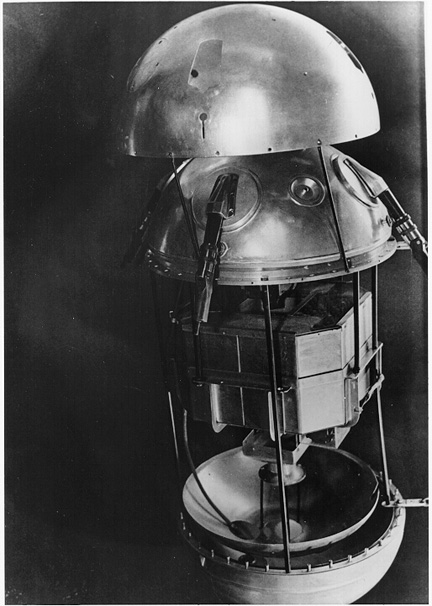

 |
 |
|
Sputnik 
Sputnik
Sputnik is the name for a series
of artificial Earth satellites that were launched by the Soviet Union that
began the Space Age. The first three were launched during the International
Geophysical Year, a period lasting from July 1, 1957, to December 31,
1958. The Council of Scientific Unions encouraged
space launches during this time because it was a period of peak solar activity.
Sputnik 1, a 184-pound (84-kilogram), 23-inch-diameter
(58-centimeter) capsule, was launched on October 4, 1957, and took 96 minutes
to circle the Earth. It remained in orbit for 57 days, when it reentered the
Earth's atmosphere and burned up. This satellite was launched by a Soviet
intercontinental ballistic missile. The launch vehicle had worrisome military
implications for the United States because it could reach targets in the United
States in less than an hour, much more quickly than a conventional bomber
aircraft. Sputnik 2, launched on November 3, 1957, carried the dog Laika,
the first living creature to travel into space and orbit the Earth. The
satellite weighed 1100 pounds (508 kilograms). The launches of Sputnik 1
and Sputnik 2 led the United States to pursue its early space activities
with more vigor and led to the creation of the National Aeronautics and Space
Administration (NASA) in 1958. The United States launched its first successful
satellite, Explorer 1, on January 31, 1958. It was much smaller than the
Sputniks, weighing only 31 pounds (14 kilograms). The Soviets responded with
the launch of Sputnik 3, a much heavier satellite that weighed more than
a ton and was its first space laboratory, on May 15, 1958. The country would launch seven
more Sputnik satellites into 1961. These carried animals that were used to test
spacecraft life-support and reentry systems and the space environment and also
continued tests of Soviet rocket technology. These spacecraft weighed several tons and were precursors
to the Vostok spacecraft that would carry Yuri Gagarin, the first human, into
space in April 1961. |